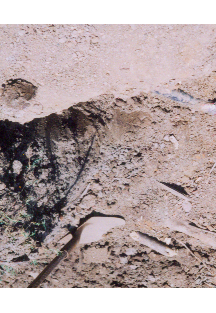Routine maintenance and build out work to the country’s domestic telecommunications infrastructure has been set back by about five months as a result of pressures being placed on the human and technical resources of GT&T by the need to attend to emergency repairs resulting from cuts in both its copper and fibre optic cable infrastructure.
GT&T’s Chief Executive Officer Yog Mahadeo told Stabroek Business in a recent interview that damage to its cable infrastructure is now sufficiently frequent to require the allocation of considerable human and material resources to restore what, in many instances, are hundreds of land line services affected by the cuts. “When critical services including call centres and other important business places are affected by the cuts, we are placed in a position where we must attend to restoring those services as a matter of urgency. That way much of our routine work has to be put on hold,” Mahadeo said.

Mahadeo told Stabroek Business that between January and June this year cable damage had cost the company in excess of US$3.5 million. In previous years, GT&T has also reported multi million dollar losses resulting from similar damage to its cable installations, generally believed to be the work of thieves seeking to acquire high-priced copper for re-sale. Mahadeo told Stabroek Business that the high costs associated with repairing damaged cable installations is associated with the amount of the work that has to be done to repair the damage. He said that apart from the costs associated with assigning technical crews to repair what, frequently, is considerable damage, there were further costs associated with the purchase of replacement cable and other material. “In addition to those costs there are also further costs associated with accessing the areas where damaged cable is located. Sometimes the roads leading to those areas are not easily accessible and there are instances in which our cables run under roads.” GT&T has, for several years been the prime target for acts of vandalism associated with the theft of copper, the metal of choice for local scrap exporters.
The prevalence of the practice of targeting the installations of GT&T and other utility companies for metal theft has resulted in official intervention including measures to inspect scrap metal being exported by local metal dealers. The persistence of the practice has led, subsequently, to the imposition by government of a series of partial and complete bans on scrap exports. Monitoring the export of copper stolen from GT&T installations, Mahadeo says, is impossible, since once the metal is stripped of its insulation and burnt its origins cannot be determined.
Efforts to bring an end to metal theft have also led to discussions among officials of the telecommunications service provider, scrap exporters and the police. Some metal dealers are believed to be in league with the thieves and according to Mahadeo though the police have shown “considerable pport” to practice continues to ebb and flow. GT&T has also instituted its own limited patrols to monitor its installations.
Meanwhile, Mahadeo says that while the vandalizing of the company’s cable installations has come to be associated with copper theft, the company’s assessment of the practice has led it to the conclusion that, in a considerable number of cases, the practice has nothing to do with the theft. He related a recent case in which an entire section of fibre optic cable was cut and removed, explaining that whoever removed the cable would have known, having made the first of two cuts that there was no copper to be found there. “The question that arises has to do with the motive of cutting and removing a section of fibre optic cable which would have been of no material value to whoever committed the act,” Mahadeo said.
Asked to comment on whether he felt he targeting of the fibre optic cable were acts of sabotage or simply acts of mindless vandalism Mahadeo would only say that seasoned copper thieves are quite likely to know that there is no copper to be found in fibre optic cable.




